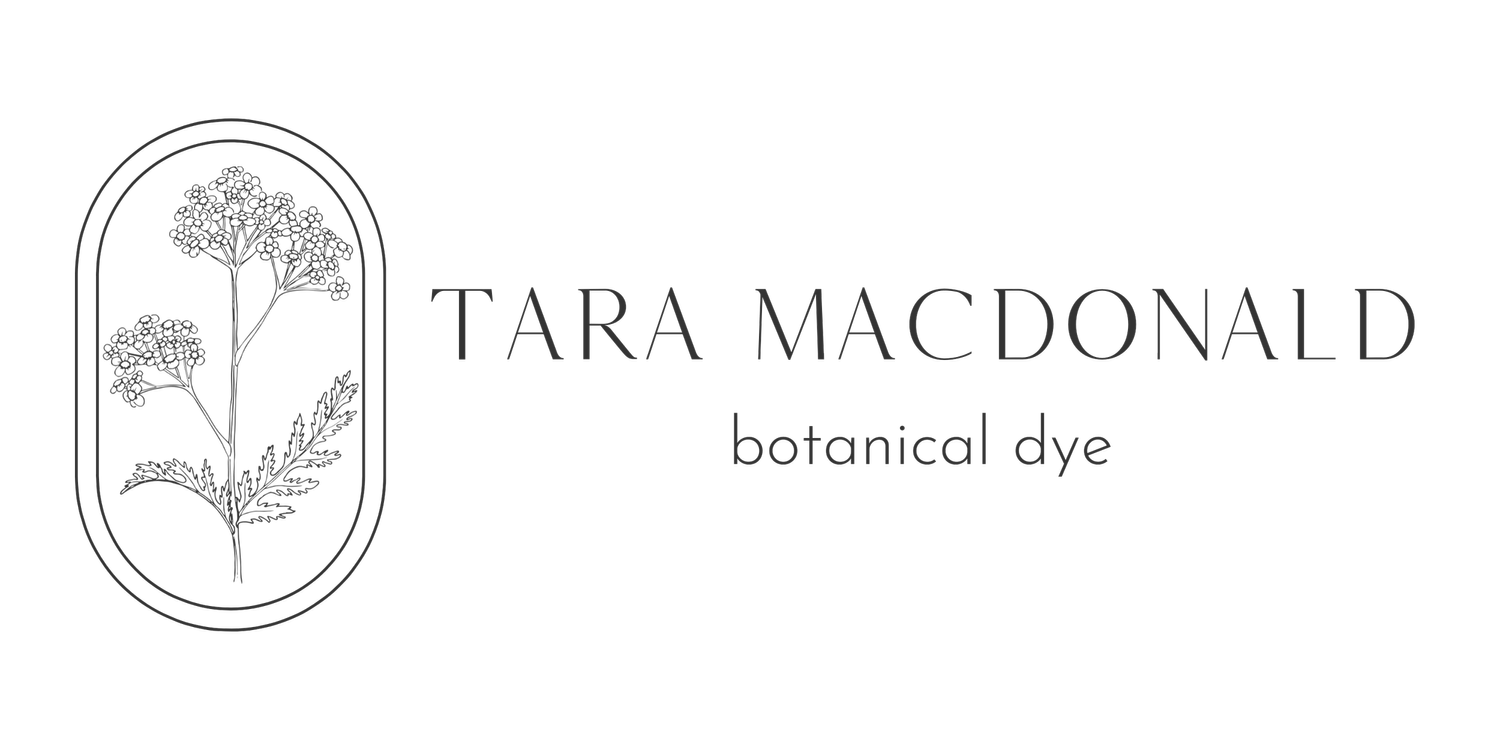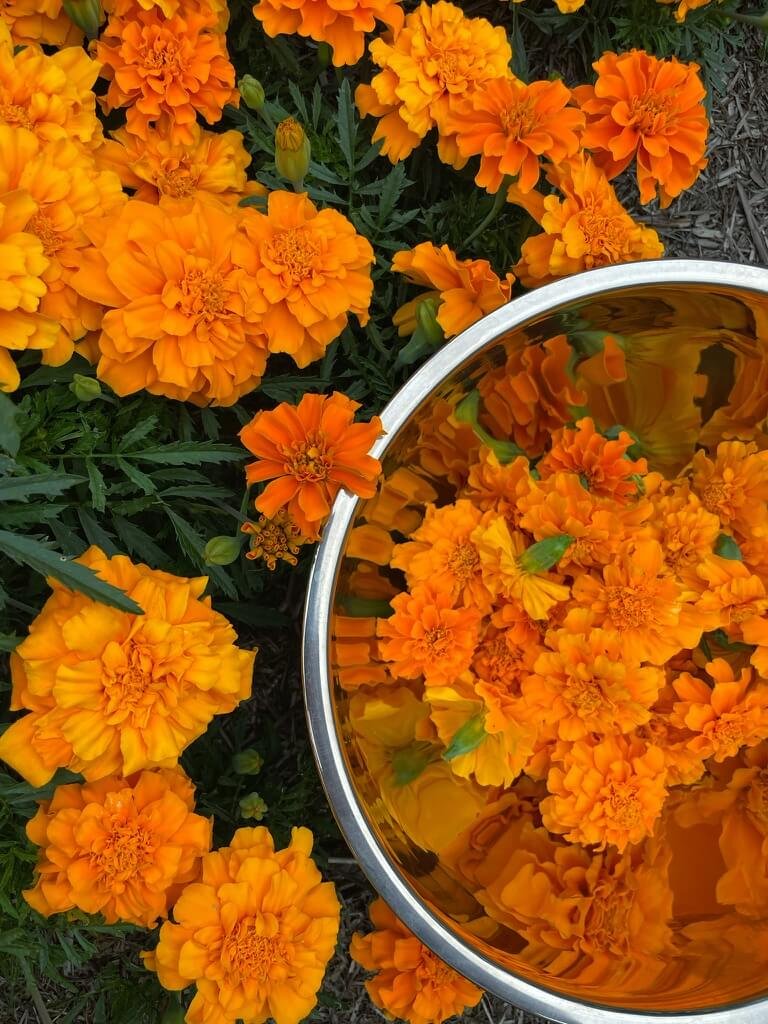Drying and Preserving Dye Flowers
Capturing Summer Colour
For me summer in the garden is about abundance. All spring we have patiently watched bright green shoots emerging from the soil and nurtured our precious little seedlings. Now it's time for nature to reveal her true glory and flowers and fruit abound. In the dye garden fresh leaves and flowers provide ample colour. It's also important however to remember the leaner seasons and give ourselves material to work with at different times of the year. Many dye plants are equally as effective once dried or pressed. Regular collecting and preserving become part of my summer routine in the garden, along with dead heading and watering. And how lovely is it to open a jar of dried flowers mid winter and smell the scent of summer...
Drying Flowers
The simplest method which I use a lot is just simply to pick and dry whole flowers. This works really well for the African Marigold (Tagetes erecta), which flower with great abandon in my garden. I have such an affection for these plants, taking me back to a childhood in 1970s suburbia and then subsequent trips to India, where they feature in sacred ritual and seem to be everywhere. Different varieties of these are also a favourite at Great Dixter garden, where I worked for many years. The colour is joyous and the petals print beautifully on fabric. I pick regularly and lay out the blooms onto baking parchment in these old bread crates, which allow the air to move. Stacked in a quiet corner of my conservatory out of direct sun, they dry within a couple of weeks. I turn the flowers every now and then to ensure even drying. As soon as they are dry I transfer them into air tight jars to store in my studio. If you have one, an electric food dehydrator works really well or simply lay them out on newspaper in a warm dry spot. These beauties will get used during the winter months for flower printing and bundle dyeing. They will also go into my bundle dye kits for you all to have a go. Even when dry they smell amazing and almost orangey - reminding me of those summer Aperols...!
Pressing
Ecoprinting
One of the joys of the summer dye garden is flower printing or ecoprinting with fresh flowers. My two favourites this year have been the annuals Coreopsis tinctoria, known as dyers tickseed and Cosmos sulphureus 'Cosmic Orange', the orange cosmos. Both give fabulous prints and whilst I make the best of the fresh flowers, to prolong the season the flowers need to be pressed. This preserves their shape for printing and allows them to be kept into the winter months.
Flower Pressing
Being such a hot dry summer, I noticed my flowers beginning to run to seed early- That made me get pressing! I'm lucky enough to have a gorgeous wooden press, where I can press layers of flowers in blotting paper. In the past however I've done lots of pressing just in newspaper and piles of heavy books - gardening encyclopaedias seem to work particularly well for this!
Pressed Flowers
I tend to place the flowers upside down on the paper as they sit better and gradually fill up the press. After closing it up tight, or piling on the books I'll try to leave it a week or so. After that its worth having a little peek to check there’s no mould or if it's really damp to change the paper. They definitely need at least a couple of weeks, then if you want, they can be carefully removed and stored flat in a box or book in baking parchment until ready to dye.
Drying Plant Tops
Some dye plants contain colour in the whole of the plant tops as well as the flowers. In my meadow I have St John's Wort (Hypericum perforatum) and Dyer's Greenweed (Genista tinctoria). In the dye
garden there is Weld (Reseda luteola) and Coreopsis tops among many other things that can all be dried for future use. I cut and create bunches to be hung in my conservatory until dried and then chopped up and stored.
Have a go at drying some of the dye plants around you for the winter. There are many you may have in your garden; rose petals, dahlias, marigolds, bay leaves, buddleia or golden rod. It's satisfying and holds onto a little bit of summer...











